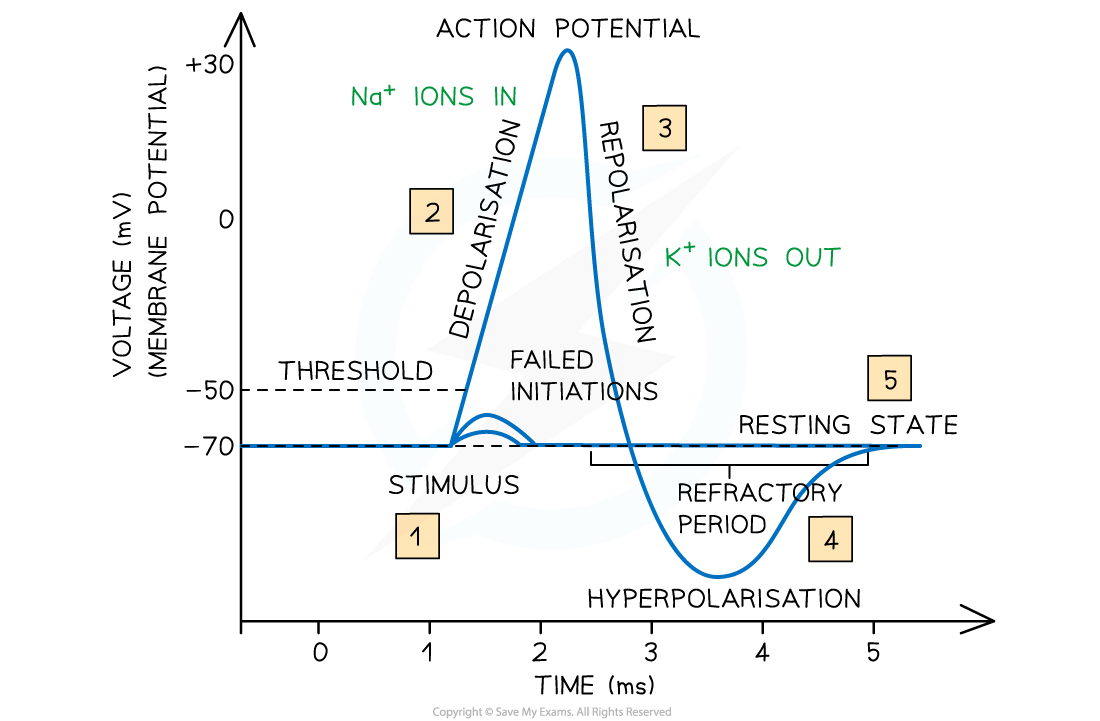- 翰林提供学术活动、国际课程、科研项目一站式留学背景提升服务!
- 400 888 0080
AQA A Level Biology复习笔记6.2.4 The Refractory Period
The Refractory Period
- Very shortly (about 1 ms) after an action potential has been generated in a section of the axon membrane, all the sodium ion voltage-gated channel proteins in this section close. This stops any further sodium ions from diffusing into the axon
- Potassium ion voltage-gated channel proteins in this section of axon membrane open, allowing the diffusion of potassium ions out of the axon, down their concentration gradient
- This gradually returns the potential difference to normal (about -70mV) – a process known as repolarisation
- Once the resting potential is close to being reestablished, the potassium ion voltage-gated channel proteins close and the sodium ion channel proteins in this section of the membrane become responsive to depolarisation again
- Until this occurs, this section of the axon membrane is in a period of recovery and is unresponsive
- This is known as the refractory period

The refractory period begins when repolarisation starts and ends when the resting state is reestablished.
The importance of the refractory period
- The refractory period is important for the following reasons:
- It ensures that action potentials are discrete events, stopping them from merging into one another
- It ensures that ‘new’ action potentials are generated ahead (ie. further along the axon), rather than behind the original action potential, as the region behind is ‘recovering’ from the action potential that has just occurred
- This means that the impulse can only travel in one direction, which is essential for the successful and efficient transmission of nerve impulses along neurones
- This also means there is a minimum time between action potentials occurring at any one place along a neurone
- The length of the refractory period is key in determining the maximum frequency at which impulses can be transmitted along neurones (between 500 and 1000 per second)
转载自savemyexams


最新发布
© 2025. All Rights Reserved. 沪ICP备2023009024号-1








